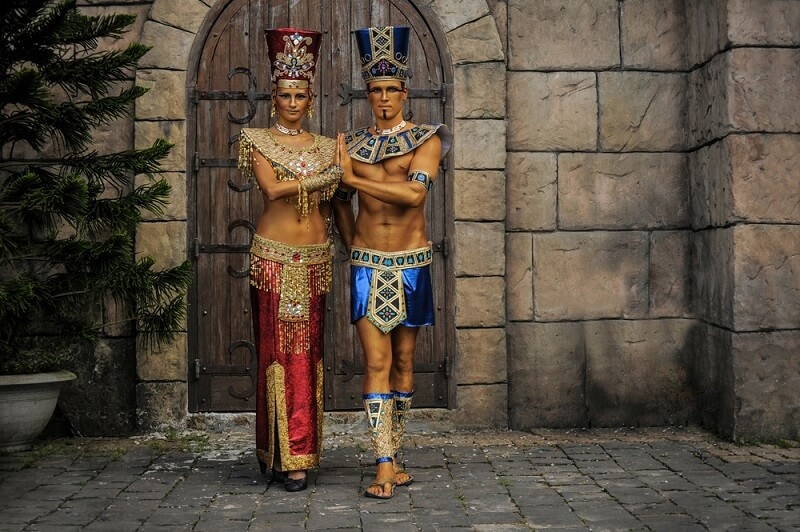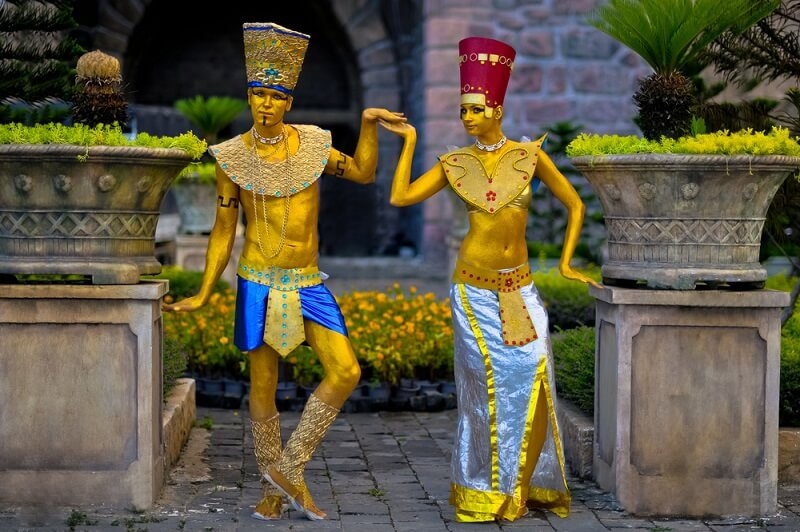
Ancient Egypt, as a civilization famous for its architectural wonders and artistry that time cannot erase, also has a legacy in the area of beauty and fashion. Some of the most iconic contributions it made to hair trends are Egyptian braided crowns, which inspire and captivate admirers to this day. These intricate hairstyles were more than mere adornments, they were profound symbols of identity, social status, and cultural heritage. Rooted in tradition and artistry, Egyptian braided crowns represented an enduring connection to history and a deep appreciation for elegance.
It would reveal the creativity and symbolism attached to every hair strand, highlighting the sophisticated hairstyles and hair treatments that existed long ago. We are not only in touch with the rich past of a great culture but also find out about the importance of hair as a reflection of oneself. This expedition into the land of Egyptian braided crowns will unravel the beauty, artistry, and eternal appeal that exists in it.
Egyptian braided crowns were more than just hairstyles; they represented power, divinity, and societal standing. The wearers included royalties, priests, and government officials. It was a message about where one stood in society. In a society that cherished order and balance, the hard work on such braids reflects the importance and synchronization found in Egypt.
For Egyptian queens like Nefertiti and Cleopatra, braided crowns formed the crowning glory that reflected their divine status and enhanced the aura of being a queen. Often these hairstyles were set with gold beads, gemstones, and other intricate patterns meant to emphasize royal heritage and one's connection with the gods. Hair symbolism is a very integral part of ancient Egypt; varied styles and adornments symbolize different stages in life, occupations, and rituals. Thus, the braided crown visually told the tale of the person wearing it.
Creating the Egyptian braided crowns was a very precise activity requiring skill and patience. Hairdressers in ancient Egypt were very professional, and their expertise was sought after by the elite. The braiding process often entailed dividing the hair into small, precise sections and weaving intricate patterns that formed a crown-like appearance. Natural oils and balms were used to smooth and condition the hair, reflecting the advanced knowledge of the Egyptians in the area of haircare.
Human hair or plant fiber extensions were commonly used to add volume and elaborate styles. The extensions were colored and processed to blend well with the rest of the natural hair for a neat and glamorous look. Accessorizing the hair with gold rings, beads, and ribbons further decorated the hairdos to be used for rituals and even as daily wear.

In ancient Egypt, hair represented one's identity and spirituality. Styling hair with braids became imbued with ritual importance; this may involve purification rituals or calling up the protection deities. Length and style can represent age, social standing, or even politics.
For example, children's hairstyles, such as the sidelock of youth, marked their passage into adulthood, while priests' shaved heads represented their purity and dedication to the gods. The braided crowns worn by royalty and nobility represented authority, sophistication, and divine favor. These hairstyles were not only a personal expression but also a reflection of cultural values and societal hierarchies.
Timeless elegance is one of the reasons that makes Egyptian braided crowns truly beautiful and deeply connected to its cultural heritage. Egyptian hairstyles inspire contemporary hair fashion for designers and hairstylists. From runway models to wedding brides, the exquisite braids of ancient Egypt inspire today's trendy styles.
This also parallels the use of natural oils and plant extracts from the Egyptians who had great importance in maintaining neat and tidy appearances through the appropriate use of the grooming techniques of the day. These archaic practices incorporated in a modern trend will acknowledge the culture that greatly values aesthetics and creativity.
Wigs were a staple part of ancient Egyptian hairstyles and sometimes were the base for braided crowns. Men and women alike sported wigs; these could be made from human hair or plant fibers to signify status as well as cleanliness. Wigs enabled the élite to wear fashionable hairstyles without making them too uncomfortable in the hot dry climate of Egypt.
Particularly braided crowns were in vogue as fashion among the elite among kings and top officials in government. The wigs also ensured such intricate designs were preserved such that they could be worn on several other occasions. Such an aspect also gives a sense of how resourceful the Egyptians were, and the keenness towards everything being perfectly appealing to the eyes.
Over Egypt's long history, styles and designs of braided crowns have evolved at times corresponding to the cultural and political changes of each dynasty. The Old Kingdom style preferred simple and geometric, while the New Kingdom favored extremely ornamented styles, including their use of gold and semi-precious stones. During the Ptolemaic period, under Hellenistic influence, braided crowns especially reveal the flexibility and ingenuity of Egyptian hairstyling traditions between Egyptian and Greek aesthetics.
Each generation contributed to the rich tapestry of Egyptian hair trends, showing that their styles and symbolism evolved gradually over time. These hairstyles did not remain static and only were modified in accordance with the changing fancies and values of the times while retaining their cultural essence.
Egyptian braided crowns have already caught the hearts of modern crowds. The style renewed interest in hairdos from centuries ago. That style has popularized Hollywood cinema and catwalks around the world. Symbols of the undying elegance that ancient Egyptian creativity brought to art, can be said to have contributed as much to current culture.
For those who would like to borrow from these hairstyles in their daily lives, braided crowns in modern versions bring together the old and the new. By experimenting with braiding techniques, accessories, and natural haircare products, anyone can bring the beauty and symbolism of ancient Egypt into the modern day.
Beyond mere historical interest, the braided crowns of Egypt transcend into pop culture as an empowering and beautiful element. Stars, fashionistas, and stylists have embraced the regal hairstyle, adding these intricate designs to their red-carpet looks and editorial shoots. With the connotations of strength and sophistication, this piece of hair braiding connects to the present times, and the idea will forever stay relevant to create a sense of legacy in future generations.
These Egyptian braided crowns are testaments to the refinement and cultural depth of ancient Egypt. They were not mere ornaments but powerful statements of identity, status, and artistic genius. In the details involved in the technique of making and the symbols they convey, one can see an expression of what such a civilization is: beauty that balances all parameters of life.
These old hairstyles come to inspire people to this date. They blend the past and the present. Browsing through their Egyptian braids crowned, as is the king of beauty, and all that is involved in one legacy of time transcending to the elegance with craftsmanship stand testimony to some good things the hairstyles remind them of the enduring power hair possesses as both an expression tool and a mode of heritage connection for many.
This content was created by AI